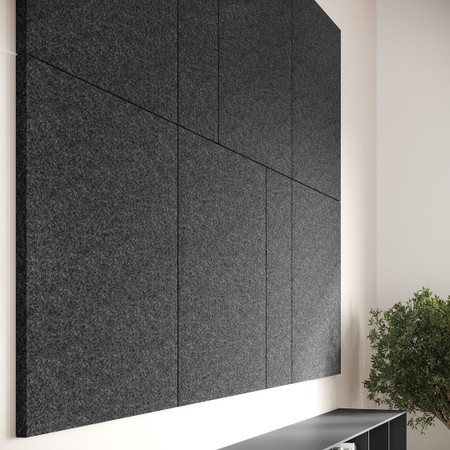Acoustic panels are an essential tool for enhancing sound quality in a variety of environments, from recording studios and home theaters to office spaces and living rooms. These panels are designed to absorb sound waves, reducing echo and reverberation, thus creating a clearer, more controlled acoustic environment. But beyond their functional benefits, acoustic panels can also serve as an aesthetically pleasing addition to any room, combining both form and function in a way that is both practical and visually appealing. The primary purpose of acoustic panels is to improve the quality of sound within a space. In environments with hard surfaces like concrete or wood, sound waves tend to bounce off these surfaces, creating unwanted noise and distortion. This effect can make it difficult to hear clearly, whether it is during a conference call, a movie viewing, or a music recording session. Acoustic panels solve this problem by absorbing the sound energy, which reduces echoes and helps to control the acoustics of a room. This leads to a more pleasant auditory experience, where speech is clearer, music sounds more natural, and overall noise levels are more manageable.

In addition to improving sound quality, acoustic panels can transform the visual appeal of a space. Many modern acoustic panels are available in a variety of colors, shapes, and sizes, making it easy to find options that complement any interior design. Whether the goal is to create a minimalist, modern look with sleek, monochromatic panels or to add a pop of color and texture with artistic designs, there is an acoustic panel solution to fit virtually every aesthetic. Some panels even come with customizable fabric options, allowing for even greater flexibility in design. This makes acoustic panels not only functional but also a key element of interior decor. For those seeking a seamless integration with their space, there are options to install panels in ways that complement the existing architecture. Some panels can be arranged in patterns or hung in specific layouts, turning them into pieces of art. In home theaters or living rooms, these panels can enhance the ambiance of the room while also improving the sound experience.
In office spaces or meeting rooms, they can create a more professional and acoustically optimized environment, helping to reduce distractions and promote clear communication. Beyond their aesthetic and acoustic benefits, acoustic panels also offer practical advantages such as reducing noise pollution. In busy urban areas or densely populated environments, sound can travel easily through walls, making it difficult to maintain privacy or reduce disturbances. Installing acoustic panels can help to mitigate this issue, making spaces more comfortable for both work and relaxation. Overall, acoustic panels are a valuable addition to any space, enhancing both sound quality and visual appeal. Their ability to improve acoustics while contributing to the design of a room makes them a versatile and beneficial choice for homeowners, businesses, and anyone looking to create a more pleasant and functional environment. Whether in a recording studio, a home theater, or an office, acoustic panels provide the perfect balance of performance and beauty, making them an investment worth considering.







